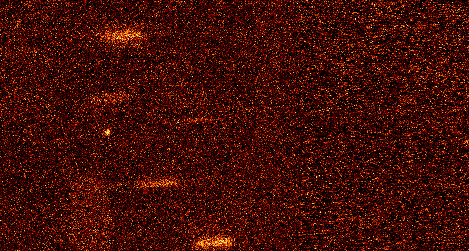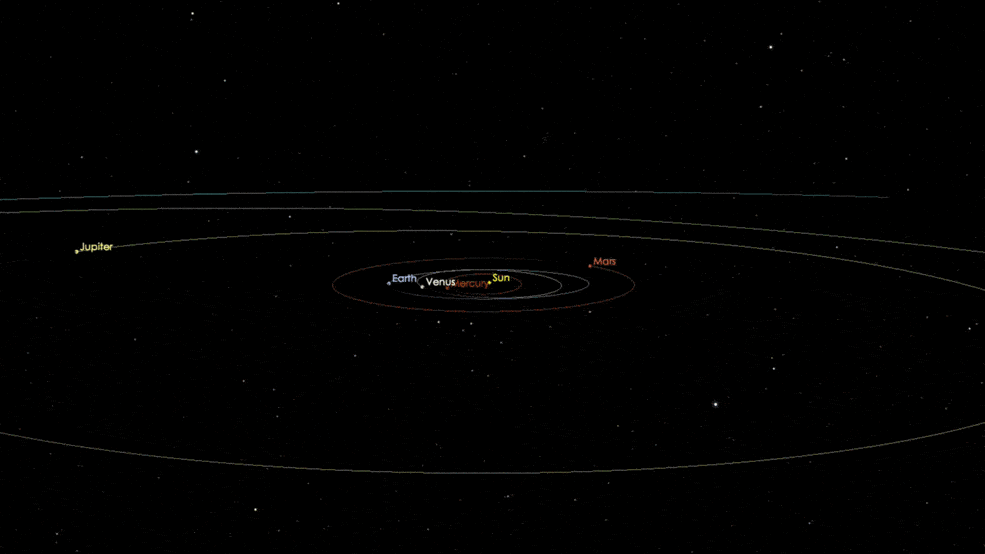A strange, highly elongated asteroid is the first recorded interstellar object to visit our solar system. Christened ‘Oumuamua, it was first spotted on 19 October. Now, more accurate observations revealed intriguing insights of the unique cosmic rock.
With the help of the Very Large Telescope (VLT) in Chile, astronomers at the Institute for Astronomy in Honolulu, Hawaii, tracked the interstellar asteroid (pronounced oh MOO-uh MOO-uh) as it hurtled through the solar system. Their investigation revealed that we’re dealing with a truly unique object.
Using VLT’s FORS (Focal Reducer and Low Dispersion Spectrograph) instrument, astronomers were able to perform spectroscopic measurements of ‘Oumuamua’s brightness and color. The asteroid’s brightness varies by a factor of 10 as it spins on its axis, making a complete rotation every 7.3 hours. This hinted at an extremely thin and long object, the likes of which scientists have never seen before — and further measurements confirmed this. Measuring 400 meters long, about 10 times its width, the rapidly rotating asteroid is the most elongated cosmic body we’ve ever found.

Images of an interloper from beyond the solar system as seen on Oct. 27 by the 3.5-meter WIYN Telescope on Kitt Peak, Ariz. Credit: WIYN OBSERVATORY/RALF KOTULLA.
In other respects, ‘Oumuamua isn’t that alien at all, as it resembles objects commonly found in the outer solar system. It’s reddish in color and completely inert, with no trace of dust around it. These properties suggest that the asteroid is dense, likely rocky or even metallic in nature. Previously, scientists thought it might be a comet but by the looks of it, ‘Oumuamua has no water or ice. Its reddened surface is the product of cosmic rays irradiating the asteroid over a long period of time.
“For decades we’ve theorized that such interstellar objects are out there, and now — for the first time — we have direct evidence they exist,” Thomas Zurbuchen, associate administrator for NASA’s Science Mission Directorate, said in a statement.
“This history-making discovery is opening a new window to study formation of solar systems beyond our own,” he added.
‘Oumuamua could provide the first evidence that planets form around other stars similarly to how they did in our very own solar system.

Animation of the path the asteroid took as it passed through our inner solar system in September and October 2017. Credit: NASA/JPL-CALTECH.
As to why the object is so peculiarly elongated, researchers aren’t sure. Some speculate that it may be the product of a large collision between bodies with molten cores after ejected material froze in this strange shape. A more exotic explanation would be that special circumstances, such as a nearby supernova, might have influenced the asteroid’s shape during ejection.
Right now, ‘Oumuamua is about 124 million miles (200 million kilometers) away from Earth and is zooming out at about 85,700 mph (137,900 km/h) relative to the sun, according to NASA. Scientists are currently keeping an eye out for the interstellar object as it heads towards the outer solar system using the NASA/European Space Agency Hubble Space Telescope and NASA’s Spitzer space telescope.
“We are continuing to observe this unique object, and we hope to more accurately pin down where it came from and where it is going next on its tour of the galaxy,” said observation team member Olivier Hainaut, from ESO. “And now that we have found the first interstellar rock, we are getting ready for the next ones!”










